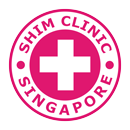Sexually transmitted infections (STIs) are a global health concern, with millions of new cases reported each year. Among the most common are HIV (Human Immunodeficiency Virus), HPV (Human Papillomavirus), and HSV (Herpes Simplex Virus). Despite their prevalence, these infections are often misunderstood. This article explores the key differences, symptoms, and prevention strategies for HIV, HPV, and HSV, helping readers make informed decisions about their health.
What Are HIV, HPV, and HSV?
1. HIV (Human Immunodeficiency Virus)
HIV is a virus that targets the immune system, specifically CD4 cells, weakening the body’s ability to fight infections. If left untreated, it can progress to AIDS (Acquired Immunodeficiency Syndrome), a severe stage of the disease. Antiretroviral therapy (ART) helps manage HIV, enabling individuals to lead long, healthy lives. Learn more about HIV testing in Singapore.
2. HPV (Human Papillomavirus)
HPV is the most common STI worldwide, with over 100 different strains. While many strains are harmless, some can lead to genital warts or increase the risk of cervical, anal, or throat cancers. Vaccination is highly effective in preventing high-risk HPV strains. Learn more about HPV vaccines and prevention.
3. HSV (Herpes Simplex Virus)
HSV is categorized into two types: HSV-1 (oral herpes) and HSV-2 (genital herpes). This virus causes painful blisters or sores and remains in the body for life, often reactivating periodically. Antiviral medications help manage symptoms and reduce transmission risk. Learn more about HSV management.
How Are They Transmitted?
HIV Transmission
- Sexual Contact: Unprotected vaginal, anal, or oral sex with an infected person.
- Bloodborne Transmission: Sharing needles, unsafe medical practices, or blood transfusions.
- Mother-to-Child: During pregnancy, childbirth, or breastfeeding.
HPV Transmission
- Skin-to-Skin Contact: Often through sexual activity, including vaginal, anal, or oral sex.
- Many individuals are asymptomatic, making it difficult to detect and prevent.
HSV Transmission
- Direct Contact: With sores, infected skin, or mucous membranes.
- Asymptomatic Shedding: The virus can spread even without visible sores.
Symptoms of HIV, HPV, and HSV in Men
HIV Symptoms
- Acute Stage (2-4 weeks post-exposure): Fever, rash, swollen lymph nodes, sore throat, and fatigue.
- Chronic Stage: Weight loss, night sweats, recurrent infections, and persistent diarrhea. Learn more about HIV symptoms and management.
HPV Symptoms
- Often asymptomatic.
- Genital Warts: Small, flesh-colored or gray growths in the genital area.
- Cancer Symptoms: Depend on the affected area, such as unusual bleeding or pain. Learn more about HPV-related symptoms.
HSV Symptoms
- Painful blisters or sores in the genital, anal, or oral area.
- Tingling or burning sensation before outbreaks.
- Flu-like symptoms during the initial infection. Learn more about HSV outbreaks and treatment.
Protecting Your Health
Understanding the differences between HIV, HPV, and HSV is essential for prevention, diagnosis, and treatment. Taking proactive measures like safe sex, vaccination, and regular testing can significantly reduce your risk. Visit Shim Clinic, a men’s health clinic in Singapore, for advice, testing, and treatment.
